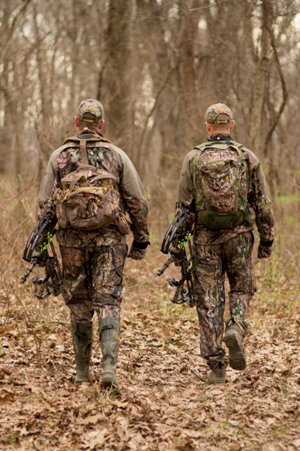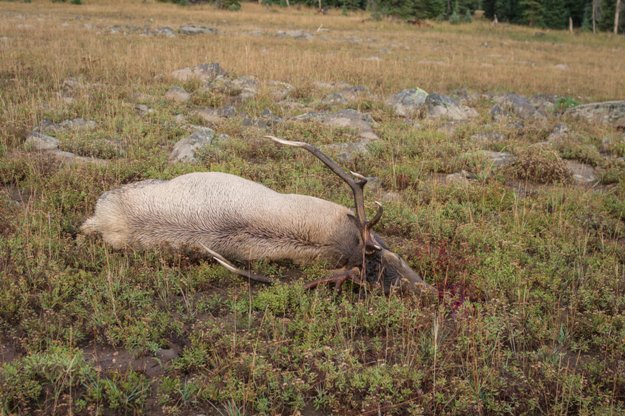 When I'm hunting around home in Utah, I primarily hunt from tree stands with my crossbow. While my hunting partner, John Spears, and I are hunting in Wyoming, we’ll be there during the peak of the rut. So, we’ll get up before daylight, fix breakfast and listen for elk bugling. This kind of hunting will be pretty much hunt-and-stalk.
When I'm hunting around home in Utah, I primarily hunt from tree stands with my crossbow. While my hunting partner, John Spears, and I are hunting in Wyoming, we’ll be there during the peak of the rut. So, we’ll get up before daylight, fix breakfast and listen for elk bugling. This kind of hunting will be pretty much hunt-and-stalk.
My crossbow can shoot farther than I like to shoot it, but I feel comfortable taking a shot out to 60 yards with it. My scope doesn’t give me any kind of reference points or mil dots past 60 yards. I don’t just like to fling arrows without knowing where I'm shooting and knowing I’ll have enough knock-down power to put a bull elk down effectively. If I don’t know what the yardage is, I won’t guess at the yardage.
When hunting elk, you have to remember a bull elk has two responsibilities. He has to keep up with the cow elk and calves, while he's looking for cows in estrus to breed. His second job is to keep other bulls away from his harem. Young bulls known as satellite bulls will be just on the outside edge of the herd, looking for a cow in estrus that has wandered away from the herd. So, when you hear a bull, and you start going to the bull, you have to keep reminding yourself that other bulls probably will be just out of sight of the herd bull. I use my 10x50 Vortex binoculars to study the area around the place where I see the herd bull. I'm looking for the satellite bulls and the cows that may have strayed away from the herd that can give away my position, if I get upwind of them. I don’t carry a spotting scope. For me, that’s added weight that I don’t feel like I really need. Any time you can find a bull by himself - not with cows and not with other bulls – this bull is the easiest to hunt. Too, those bulls usually will come in to calling fairly easy.
The kinds of places we typically hunt are areas where we can draw a tag about every other year. By hunting those types of regions, you can get to know those places and the elk that live there. However, when you go out of state, you're moving into new country to hunt elk, and you have to learn those sections of land. Here’s my thought. I like to hunt a new place where I possibly can draw a tag every other year. This way if I'm successful, I should be able to go back a year or two later with a lot more knowledge about where to hunt and where to find the elk.
Day 2: Kelly Hicks Hikes 4 Miles Before Hunting Elk and Explains His Equipment
Tomorrow: The Elk’s Down – Now What




























